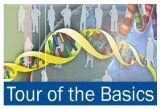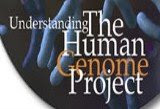 Life Science Space (June 23, 2008)--Cells with irreparable DNA damage normally induce programmed cell death, or apoptosis. However, this mechanism often fails in tumor cells so that transformed cells are able to multiply and spread throughout the body. Scientists at the German Cancer Research Center (Deutsches Krebsforschungszentrum, DKFZ) have now discovered a possible cause of this failure.
Life Science Space (June 23, 2008)--Cells with irreparable DNA damage normally induce programmed cell death, or apoptosis. However, this mechanism often fails in tumor cells so that transformed cells are able to multiply and spread throughout the body. Scientists at the German Cancer Research Center (Deutsches Krebsforschungszentrum, DKFZ) have now discovered a possible cause of this failure. Tumor cells simply degrade a protein that triggers apoptosis in the case of DNA damage. Blocking this protein degradation might set apoptosis back in operation and, thus, increase the effectiveness of radiotherapy or chemotherapy. The researchers have now published their results in Nature Cell Biology.
Proteins that trigger programmed cell death, or apoptosis, must be kept under careful control. After all, a cell should induce its own death only if its genetic material is damaged so severely that there is a danger of its transformation into a malignantly growing tumor cell. However, minor damages in the DNA can be corrected by the cell’s special repair mechanisms – hence, no reason to commit suicide!
Among the proteins that trigger apoptosis after severe DNA damage is the HIPK2 molecule. Scientists in Dr. Thomas Hofmann’s research group at the German Cancer Research Center (DKFZ) have now shown that although HIPK2 is continuously produced in healthy cells, it is instantly degraded again. An enzyme called Siah-1 attaches labels to HIPK2 marking it as "garbage". Thus, the cell prevents that apoptosis is induced "accidentally".
Slightly damaged cells enter a kind of alarm status: They block degradation of HIPK2 by Siah-1 for a short time. But as soon as the damage is repaired, the cell immediately resumes labeling HIPK2 as garbage and degrades the molecule. Only in severely damaged cells, such as by a broken DNA double strand, degradation of HIPK2 by the Siah-1 enzyme is blocked permanently. As a result, HIPK2 accumulates, apoptosis is triggered, and the cell commits suicide.
Researchers assume that this could be one of the reasons why radiation therapy or chemotherapy is sometimes ineffective. Both treatment methods cause severe damage to tumor cells, which eventually leads to programmed cell death. "If resistances occur, this is often caused by tumor cells ‘refusing’ to take the order to commit suicide," Thomas Hofmann explains.
To prevent HIPK2 degradation, Hoffmann and his colleagues conducted experiments in which they blocked the Siah-1 enzyme. As a result, HIPK2 was able to accumulate even in cells that were only slightly damaged, and apoptosis was induced. "Cancer medicine might be able to make use of our discovery," speculates Hofmann. “For example, we could use a Siah-1 blocker simultaneously with chemotherapy or radiotherapy to get the cells back into the apoptosis program."
--------------------------------------------------------------------------------
The task of the Deutsches Krebsforschungszentrum in Heidelberg (German Cancer Research Center, DKFZ) is to systematically investigate the mechanisms of cancer development and to identify cancer risk factors. The findings resulting from basic research are expected to lead to new approaches in the prevention, diagnosis, and treatment of cancer.
-------------------------------------------------------------------------------
Press release. German cancer research center--http://www.dkfz.de/en/presse/pressemitteilungen/2008/dkfz_pm_08_36.php
http://www.dkfz.de/en/presse/pressemitteilungen/2008/download/dkfz_pm_08_36_e.pdf
http://www.dkfz.de/en/presse/pressemitteilungen/2008/download/dkfz_pm_08_36_e.pdf
.jpg)
.jpg)
.jpg)

.jpg)
.jpg)
No comments:
Post a Comment